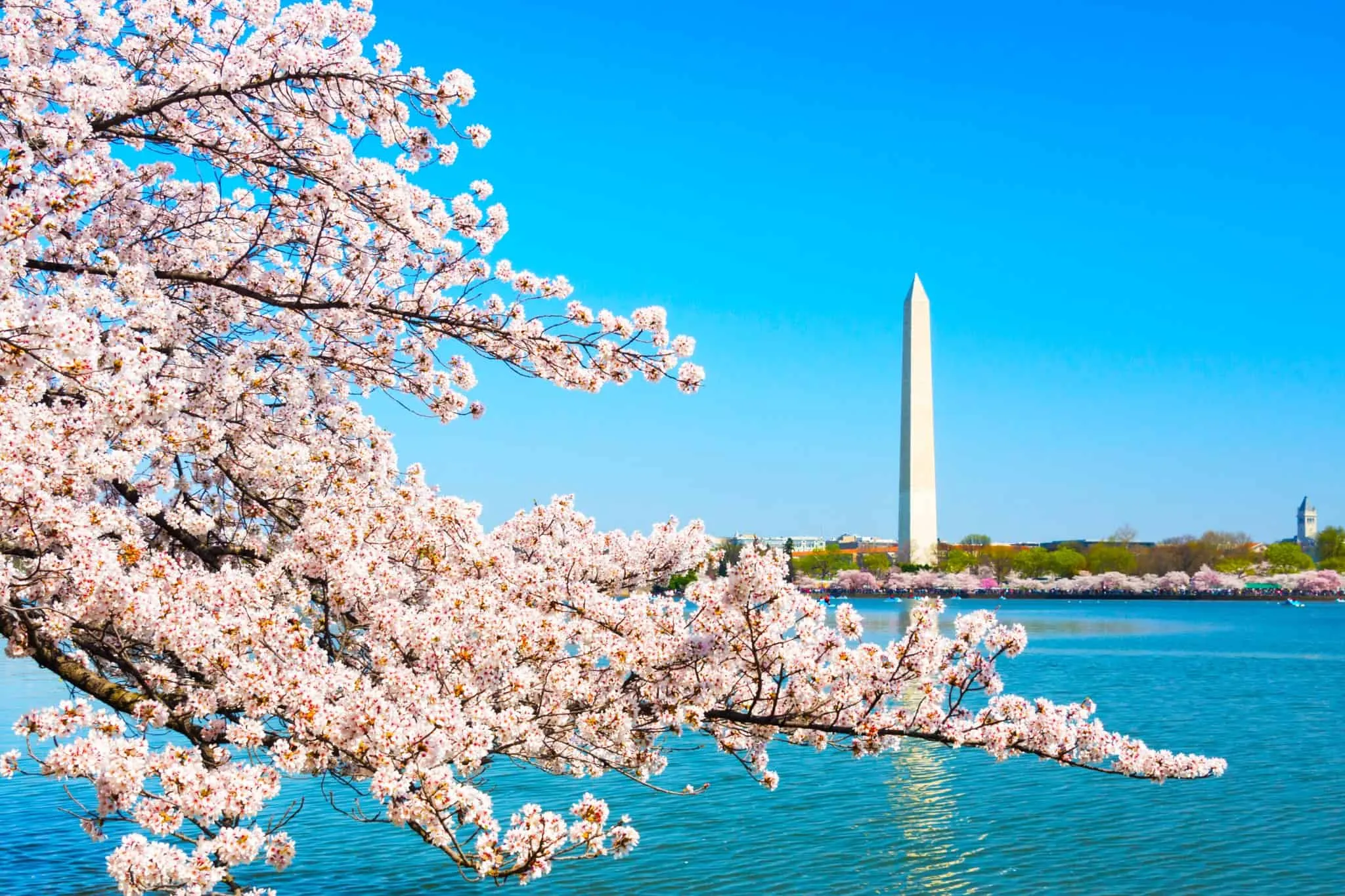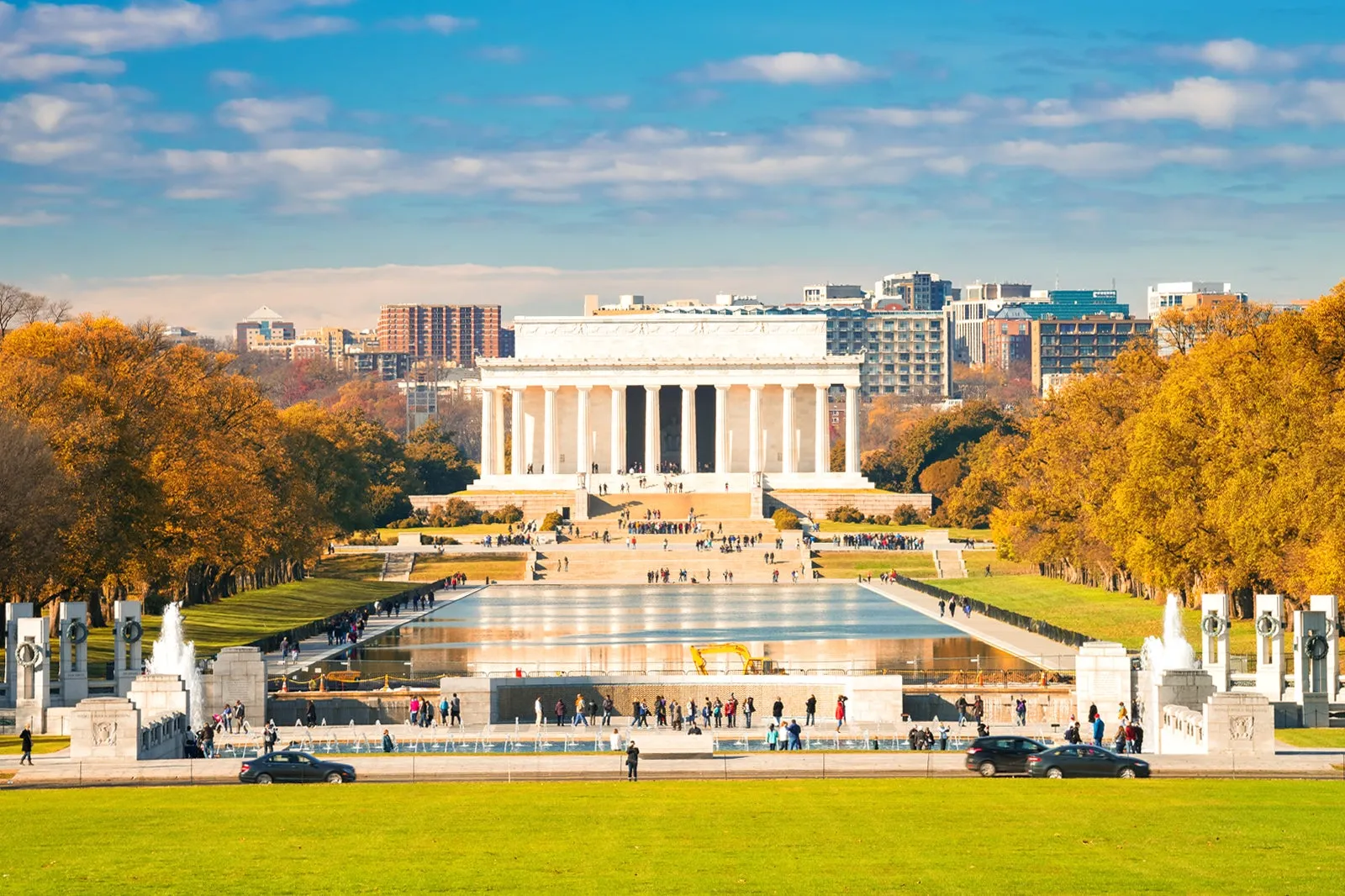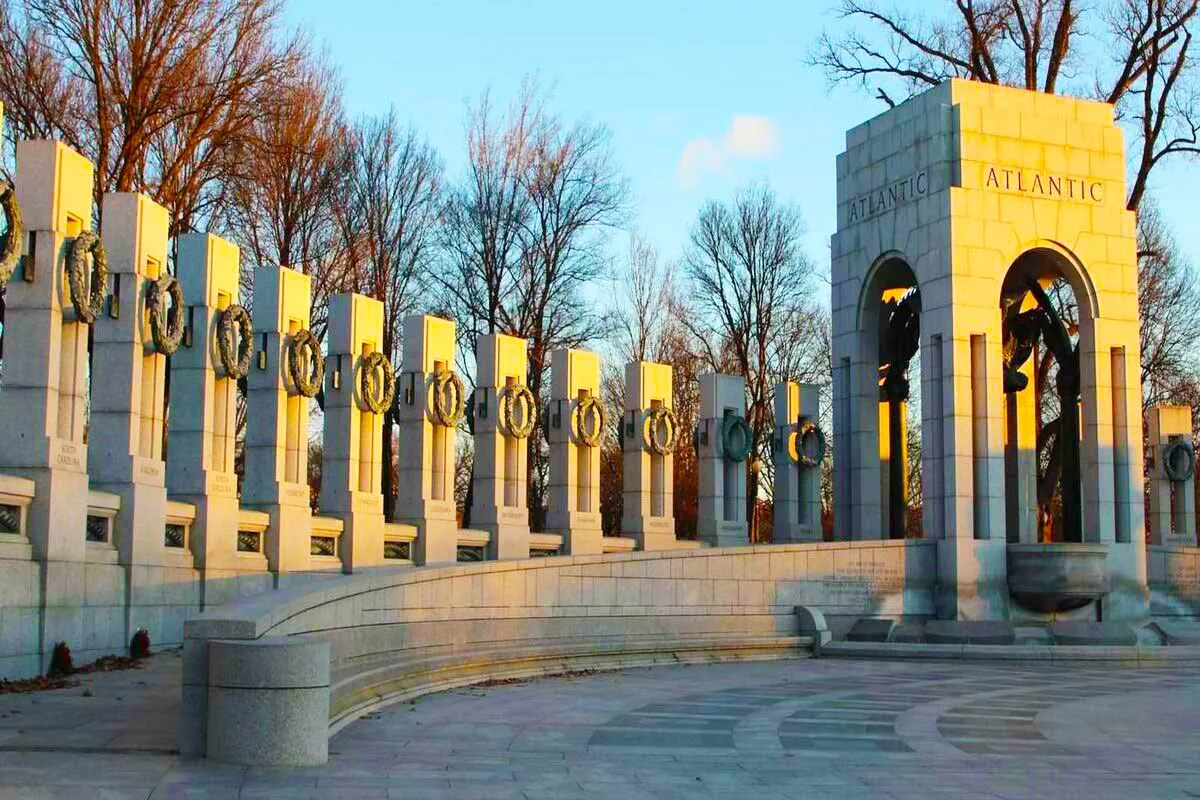Washington D.C., the capital of the United States, is not only a political center but also a living museum of American history, especially the imprints of wars. From majestic monuments to museums preserving memories, Washington D.C. is a place where visitors can deeply understand the events that have shaped this nation. Let’s explore the landmarks bearing the marks of war history in Washington D.C., where every stone and every monument tells a heroic and tragic story.
Washington Monument – A Timeless Symbol
The Washington Monument, an unmissable symbol when visiting Washington D.C., was built to honor George Washington, the first president and commander of the Continental Army during the American Revolutionary War. Although not directly related to a specific battle, the existence of this monument reminds us of the hardships and sacrifices Washington endured to gain independence for America.
The construction of the monument was also arduous, lasting for decades with many interruptions due to funding shortages and political upheavals. The monument’s two different colors, resulting from the use of different types of stone during construction, also testifies to the difficulties that Americans overcame.

Lincoln Memorial – Remembering the Wartime President
The Lincoln Memorial is one of the most prominent structures in Washington D.C., honoring Abraham Lincoln, the president who led the United States during the Civil War (1861-1865). The Civil War was one of the bloodiest periods in American history, and Lincoln played a pivotal role in maintaining national unity and abolishing slavery.
With its classical Greek architecture and 36 marble columns representing the number of states at the time of Lincoln’s death, this memorial is not only a beautiful architectural work but also a symbol of unity and reconciliation after the war. The statue of Lincoln sitting solemnly inside the memorial is a reminder of leadership responsibility and steadfastness in difficult times.

World War II Memorial – Honoring the Heroes
Dedicated in 2004, the World War II Memorial is a tribute to the American soldiers who fought in the most devastating war in human history. Located between the Washington Monument and the Lincoln Memorial, this site connects two important historical periods of America, while honoring the values they fought to protect.
Fifty-six granite columns representing the 50 states and territories of the U.S., along with a central lake and fountains, create a solemn and tranquil space. Inscriptions carved in stone record important battles and the great sacrifices Americans made to the Allied victory.

Arlington National Cemetery – Eternal Resting Place
Located just across the Potomac River, opposite Washington D.C., Arlington National Cemetery is the final resting place of hundreds of thousands of American soldiers who sacrificed their lives in wars from the Civil War to recent conflicts. This is not just a cemetery but also a living historical site where visitors can pay their respects to those who served and died for their country.
Rows of white tombstones stretching across green hills create a solemn and moving scene. The Changing of the Guard ceremony at the Tomb of the Unknown Soldier is a special ritual, attracting many visitors to witness and remember the soldiers who fell without their names being known.
National Museum of the United States Army – Learning About the Art of War
Although not located in Washington D.C., the National Museum of the United States Army in Fort Belvoir, Virginia, not far from the capital, is an unmissable destination for those who want to learn more about the military history of the United States. The museum displays artifacts, weapons, equipment, and stories of soldiers who have served in the U.S. Army from the nation’s founding to the present day.
The exhibitions are elaborately designed, incorporating modern technology to recreate important battles and help visitors better understand the tactics, strategies, and sacrifices that soldiers endured.
National Mall – Historical Witness to Anti-War Protests
The National Mall, stretching from the Capitol Building to the Lincoln Memorial, is not just a park but also an important public space where many significant historical and political events have taken place. Throughout the 20th century, the National Mall was the gathering place for anti-war protests, from the Vietnam War to conflicts in the Middle East.
These protests have contributed to shaping public opinion and U.S. government policy, while demonstrating the important role of citizens in checking power and promoting peace.
Conclusion
Washington D.C. is not only a political capital but also a living history museum, preserving the imprints of wars that have shaped this nation. From majestic monuments to solemn cemeteries, each location tells a story of sacrifice, courage, and the aspiration for peace.
When visiting Washington D.C., take the time to explore these landmarks and reflect on the historical lessons they offer. It is the best way to deeply understand America and the values that this nation always pursues. Remember that history is not just past events but also lessons for the future, and learning about the past is the best way to build a better world.